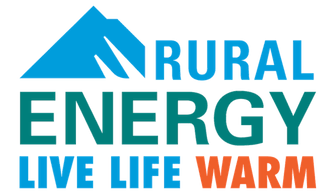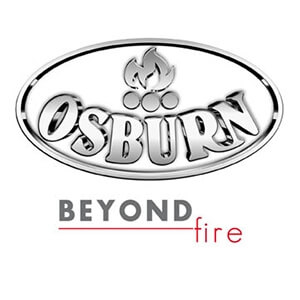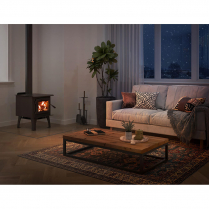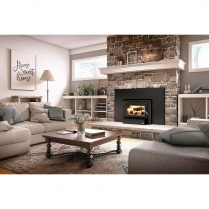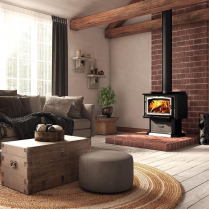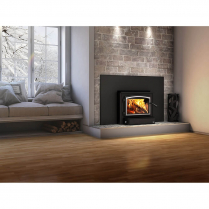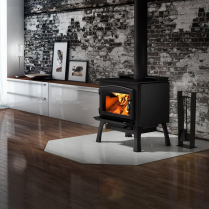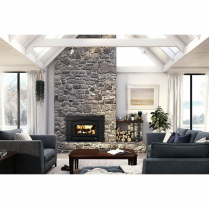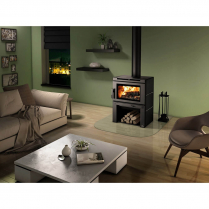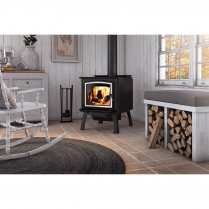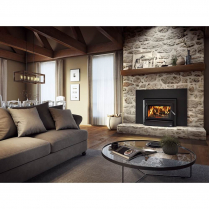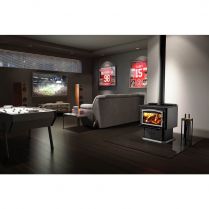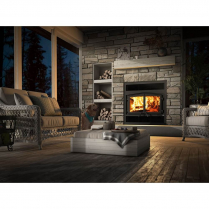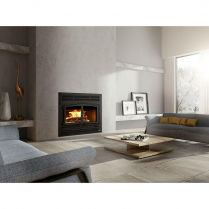Osburn Product Range:
Osburn offers a comprehensive range of heating solutions to enhance your home's warmth and ambiance. Their products are renowned for their efficiency, durability, and aesthetic appeal, making them a preferred choice for those seeking reliable and eco-friendly heating options.
Osburn Wood Inserts:
Osburn wood inserts are designed to upgrade existing fireplaces by increasing their heating efficiency. These inserts are customizable to fit seamlessly with any home decor, offering a cost-effective way to enhance your heating system.
Key Features & Benefits:
- High Efficiency: Models like the Osburn 3500 provide a maximum heat output of 110,000 BTU/h, ensuring efficient heating for spaces up to 2,700 square feet.
- Customization Options: Choose from various door overlays, faceplates, and trims to match your home's style.
- Safety and Reliability: EPA-certified with a limited lifetime warranty, ensuring peace of mind for homeowners.
- Government Incentives: Eligible for government incentives, making them a financially savvy choice.
Osburn wood inserts offer a perfect blend of efficiency, customization, and reliability, making them an ideal choice for homeowners upgrading their existing fireplaces without compromising style or performance.
Osburn Wood Stoves:
Osburn wood stoves are available in traditional, contemporary, and modern designs, offering a range of options to suit any home's aesthetic. They are known for their durable construction and reliable performance.
Key Features & Benefits:
- Variety of Styles: Available in various sizes and styles to fit different home decor and heating needs.
- Efficiency and Performance: Their high-efficiency ratings and long burn times ensure consistent heat output, making them a cost-effective heating solution.
- Durable Construction: Built with high-quality materials to ensure years of reliable service.
- Eco-Friendly: Designed to minimize emissions, aligning with EPA standards for cleaner burning.
Osburn wood stoves combine innovative designs with eco-friendly features, providing homeowners with a reliable, efficient, and aesthetically pleasing heating solution that enhances warmth and ambiance.
Osburn Wood Fireplaces:
Osburn wood fireplaces are designed to provide timeless beauty and efficiency. Their zero-clearance models are perfect for new constructions or renovations, offering seamless integration into any home style.
Key Features & Benefits:
- Timeless Design: Elegant designs that complement any home decor, providing a cozy ambiance.
- Efficiency and Performance: Models like the Osburn Horizon feature advanced air control mechanisms for superior combustion quality and minimal emissions.
- Zero Clearance: Ideal for new constructions or renovations, allowing for flexible installation options.
- High Heat Output: Capable of heating large areas efficiently, ensuring warmth during cold winter months.
Osburn wood fireplaces offer a blend of traditional charm and modern efficiency, providing homeowners with a reliable and environmentally friendly heating solution that enhances both the aesthetic and warmth of their living spaces.
Osburn's comprehensive product range caters to diverse heating needs, offering a combination of efficiency, customization, and eco-friendliness. Whether you're looking to upgrade an existing fireplace or install a new heating system, Osburn's wood inserts, stoves, and fireplaces provide reliable, cost-effective solutions that enhance warmth and ambiance in your home.
Applications:
Osburn products are ideal for residential users seeking efficient and environmentally friendly heating solutions. Whether you're a homeowner looking to reduce energy bills or enhance your home's ambiance, Osburn's wood-burning appliances offer a reliable and sustainable option. They are also suitable for remote or off-grid locations where traditional heating methods may not be feasible.
Safety, Reliability, Maintenance, and Care:
Osburn products are designed with safety and reliability in mind. They are EPA-certified, ensuring compliance with strict emissions standards. Regular maintenance, such as annual inspections and proper fuel use, is crucial for optimal performance and longevity. Osburn offers a limited lifetime warranty on its products, providing homeowners peace of mind. For more detailed maintenance tips and support resources, visit the Osburn website or contact Rural Energy Enterprises.
Why Choose Osburn?
Osburn stands out for its commitment to innovation and sustainability. The brand's efficient and environmentally conscious products make them a preferred choice for those seeking eco-friendly heating solutions. Customer testimonials highlight the satisfaction with Osburn's performance and durability. For instance, the Osburn 3500 wood stove has received high praise for its heating efficiency and design.
Why Choose Rural Energy Enterprises?
Rural Energy Enterprises offers expert support and exclusive deals on Osburn products. Our team provides comprehensive pre-sales and post-sales service, ensuring customers receive the best possible experience. Whether you need installation advice or maintenance tips, our dedicated customer service team is here to help.
Ready to experience the warmth and efficiency of Osburn wood-burning appliances? Contact Rural Energy Enterprises today for quotes and to explore our range of Osburn products. Let us help you find the perfect heating solution for your home.
